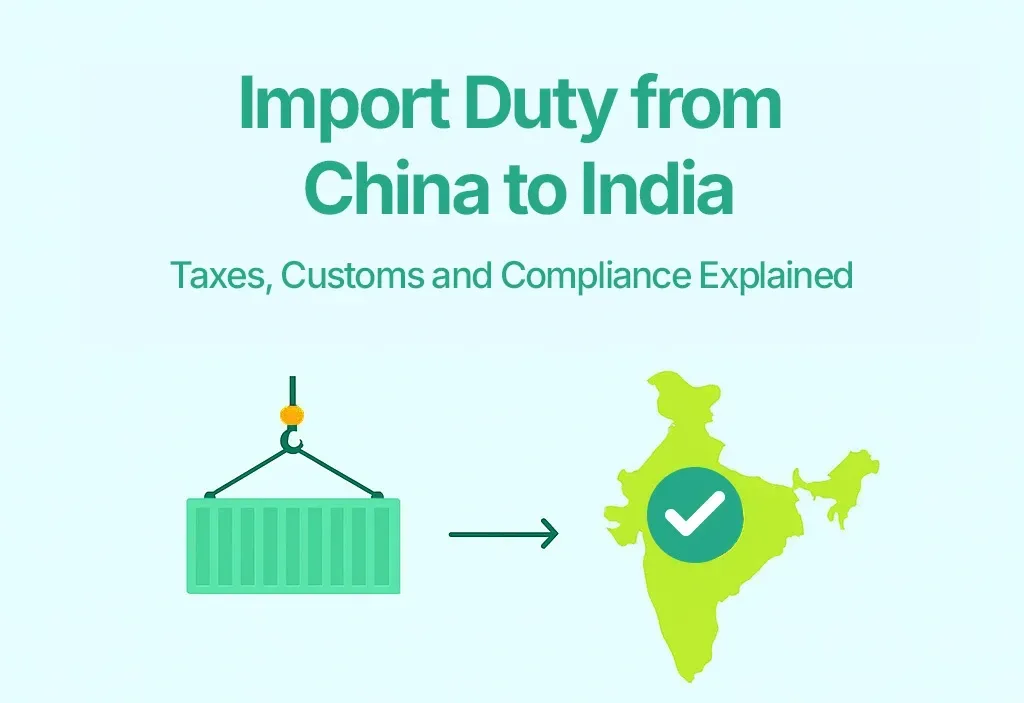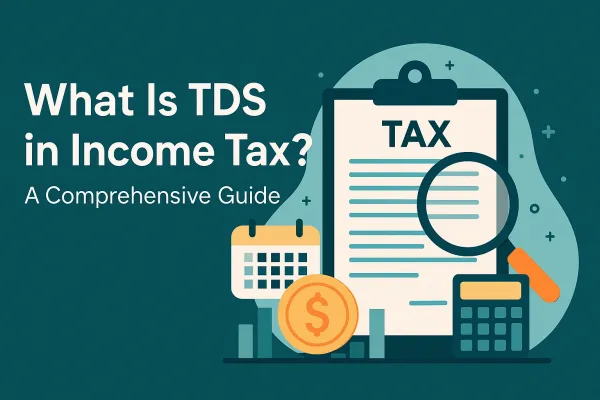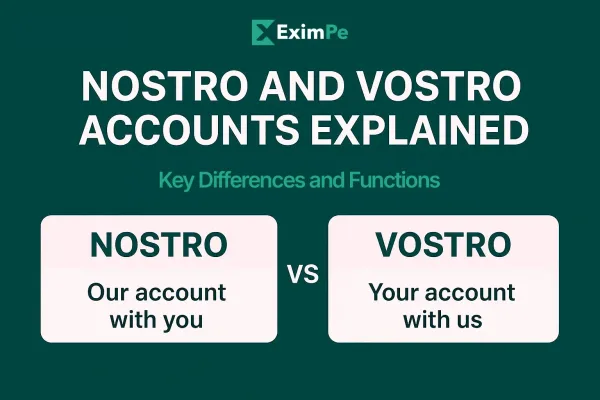Import Duty from China to India: Taxes, Customs, and Compliance Explained

India and China are among the largest trading partners in the world. Many Indian businesses—ranging from small e-commerce sellers to large-scale importers—source products from China due to its competitive pricing, diverse product range, and strong manufacturing base.
However, importing goods from China to India isn’t just about finding the right supplier and shipping products. Importers need to understand import duties, taxes, and compliance requirements set by Indian customs and the Reserve Bank of India (RBI).
This guide explains the complete process of importing from China to India, focusing on import duty, taxes, customs clearance, compliance, and how businesses can save costs while staying compliant.
Why Businesses Import from China to India
China is known as the “world’s factory” for a reason. It produces high-quality products at low manufacturing costs, making it the go-to destination for Indian importers. Some of the most profitable items to import from China to India include:
- Electronics and mobile accessories
- Toys and baby products
- Apparel, fabrics, and fashion accessories
- Machinery and spare parts
- Kitchenware and home appliances
- Stationery and office supplies
These products often have a high demand and strong profit margin in India, especially when sourced at scale.
Latest Import Duty Rates for Chinese Goods (2025)
Customs rates depend on the type of goods, their HS/CTH code, and current policy. Examples (from 2025 Budget):
Rates subject to change; always check the latest CBIC notifications or use an import duty calculator for the exact figures.
Understanding Import Duty from China to India
When you import goods into India, you are required to pay customs duty and other taxes to the Indian government. The total duty depends on the HSN (Harmonized System of Nomenclature) code of the product, which classifies goods for customs purposes.
Key Types of Import Duties and Taxes:
- Basic Customs Duty (BCD): A standard duty applied on imported goods. The rate varies based on product type.
- Integrated Goods and Services Tax (IGST): Charged on all imported goods. The rate usually matches the GST applicable on the same product if sold in India.
- Social Welfare Surcharge (SWS): Usually 10% of the Basic Customs Duty, added to fund social welfare initiatives.
- Anti-Dumping Duty (if applicable): Applied to prevent underpriced imports that could harm Indian manufacturers.
- Safeguard Duty (if applicable): Temporary duty imposed to protect domestic industries from sudden import surges.
💡 Example: If you import LED lights from China, you’ll pay BCD + IGST + SWS on the product’s assessed value. The total cost will be the landed cost, which includes product cost + shipping + customs duty + taxes.
Customs Process for Importing from China to India
To ensure smooth imports, you must follow the customs clearance process:
Step 1: Obtain Importer Exporter Code (IEC)
Issued by the Directorate General of Foreign Trade (DGFT), IEC is mandatory for any importer in India.
Step 2: Determine HSN Code and Duty Rate
Identify the correct HSN code for your product to calculate applicable import duty.
Step 3: File Bill of Entry
A Bill of Entry (BoE) is filed on the ICEGATE portal for customs clearance. It details product value, classification, and applicable duties.
Step 4: Customs Examination
Customs officers may inspect shipments physically or via documentation checks.
Step 5: Duty Payment and Release
Once duties and taxes are paid, goods are cleared for delivery.
Compliance Requirements for Importers
Importers must comply with several regulations to avoid penalties:
- RBI’s IDPMS (Import Data Processing and Monitoring System): All import payments must be reported and matched with customs data.
- Product-Specific Regulations: Certain goods like medical equipment, electronics, and food items may require approvals from BIS, FSSAI, or DGFT.
- Correct Invoicing: Ensure invoices mention product details, value, and supplier information accurately.
- Banking Compliance: Payments must be routed through authorized dealer (AD-I) banks.
The Role of the HS Code: The Key to Accurate Calculation
The most critical part of the entire process is correctly identifying your product’s Harmonized System (HS) Code. This is a globally standardized product classification system, and every item you import has a specific 6-digit or 8-digit code.
Your import duty from China to India is directly determined by this code. Using an incorrect HS code can lead to:
- Wrong Duty Payment: You could overpay or, worse, underpay, which could lead to penalties.
- Compliance Issues: Customs can raise a query or even seize your shipment if they find the HS code to be intentionally mis-declared.
You can find your product's HS code on official government websites or through a reliable Customs House Agent (CHA).
Cost-Saving Tips for Importing from China
- Bulk Importing: Larger quantities reduce per-unit shipping and duty costs.
- Correct HSN Classification: Misclassification can lead to higher duty or penalties.
- Use Sea Freight for Heavy Goods: More economical than air freight.
- Negotiate Payment Terms: Favorable terms with Chinese suppliers improve cash flow.
- Choose the Right Partner: Working with an experienced trade finance and payments partner helps minimize costs.
How EximPe Helps Importers from China to India
Importing from China can be complex with compliance, customs, and payment challenges. EximPe simplifies this process for Indian businesses with its robust cross-border trade solutions.
With EximPe, you get:
- 🌍 Global Trade & Collection Accounts: Powered by RBI-compliant AD-I banks to manage your international collections and payments.
- 💱 Best FX Rates: Save money on every international transaction.
- 📑 Streamlined Transactions: Reduced paperwork and faster settlements for imports.
- 💼 Trade Finance Solutions: Access reliable financing at the best market rates.
By using EximPe, importers can manage customs payments, supplier settlements, and trade finance in one place—making imports from China more cost-effective and compliant.
Conclusion
Importing from China to India offers businesses huge opportunities in terms of product variety, competitive pricing, and profitability. But success depends on understanding import duties, customs compliance, and efficient payments.
By leveraging platforms like EximPe, Indian businesses can reduce costs, ensure compliance, and make their import process more seamless.
FAQs
What is the import duty from China to India?
Import duty varies depending on the product’s HSN code and includes BCD, IGST, SWS, and sometimes anti-dumping duty.
How do I calculate import duty on products from China?
You can calculate duty using the ICEGATE duty calculator by entering the product’s HSN code and CIF (Cost, Insurance, Freight) value.
Is IEC code mandatory for imports from China?
Yes, an Importer Exporter Code (IEC) from DGFT is mandatory for any business importing goods from China.
Can I import goods from China without paying duty?
No, all imports are subject to customs duty and GST unless exempted under specific government schemes.
What are the most profitable items to import from China to India?
Electronics, toys, garments, mobile accessories, and home appliances are among the most profitable categories.
Do I need BIS approval to import from China?
For products like electronics and toys, BIS certification may be required to comply with Indian safety standards.
Can I pay Chinese suppliers in USD or RMB directly?
Yes, but payments must be routed through authorized dealer banks in India and reported in IDPMS.
Which is better: air freight or sea freight for importing from China?
- Air Freight: Faster but expensive, good for light, high-value goods.
- Sea Freight: Economical for bulk and heavy shipments.
How can EximPe help in importing from China?
EximPe provides best FX rates, RBI-compliant accounts, trade finance, and simplified global payments, making imports cost-effective and compliant.



